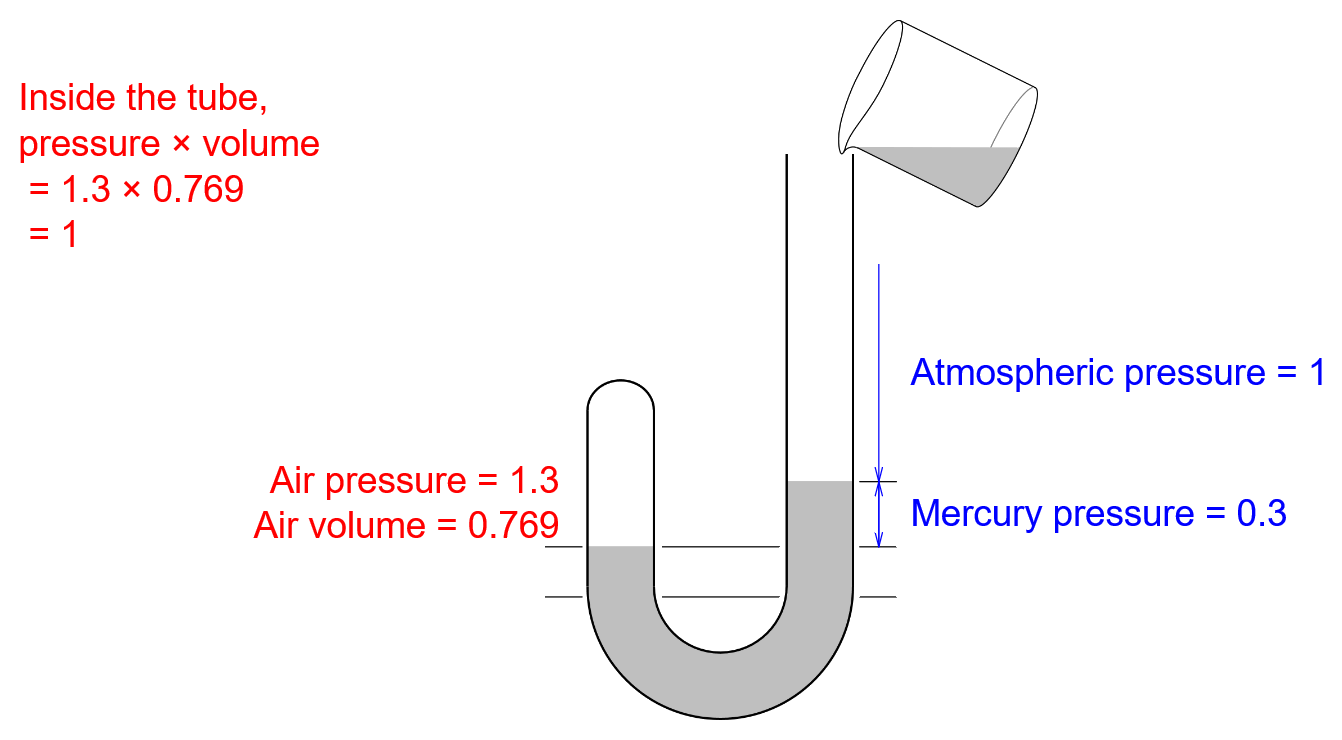Mercury is poured into the open end of a J-shaped glass tube which is closed at the short end trapping air in. You will want to wait 24 hours to see how much gas has collected in each tube.
This type of tube doesnt have a balloon or mushroom end to hold it in place so it can come.

J shaped tube chemistry. The left arm is 1083 cm and the right arm is 3471 cm above the bottomof the manometer. How much mercury can be poured in before the mercury overflows. X gas in open end manometer.
17032021 Spatulas and scoopulas are used to scoop out chemicals and solids out of containers and onto a crucible for weighing. Capture students interest with Labsters immersive game-based virtual labs. A chemistry test tube typically has a flat bottom a round bottom or a conical bottom.
The shorter limb is open to the atmosphere and floating on top of the mercury there is a small glass float. 05112020 An inverted tube see above is placed into a beaker full of a liquid often mercury or water. A wheel barometer uses a J.
13032019 The gas is at a pressure of 1 atm. You can lower the J end of the rubber tubing into the beaker of water and up into the collecting tube very carefully. A jejunostomy tube also called a J-tube is a surgically placed directly into your childs small intestine to help with nutrition and growth.
You can assume that there is so much more mercury in the pool than can fit into the tube that even if the J-tube is completely filled the level of mercury in the pool wont change. Pressures at point x and y are also equal and Pxpressure of gash and PyP 0 thus. You can use a laboratory thermometer to check the temperature of chemicals or sometimes to check the temperature rise as well.
The pressure of the air presses down on the liquid in the beaker causing it to rise into the tube. Find the relation between gases X Y Z in the manometers given below. They can be electronic or have a mercury tube as well.
Tube 1 should not collect any gas as it. The gas is at a pressure of 1 atm. They are also sometimes used to mix chemicals.
Relation between densities of water and mercury is. A J-shaped tube is connected to the bottom of the flask and the mercury can freely flow in or out of this tube. A j-shaped tube is connected to the bottom of the flask and the mercury can freely flow in or out of this tube.
4The mercury level in the left arm of the J-shaped tube is attached to a thermostat gas-containing bulb. Take atmospheric pressure to be 76 cm Hg. D water d mercury and P 0 75 cm Hg.
The top often features a flared lip to aid pouring out the contents. Ad Science educators created Labster virtual labs to improve outcomes at the college-level. The tube is usually a red rubber tube that is stitched at the stoma site which is the opening in the skin.
The trapped air acted much like a. The amount of liquid that rises into the tube can be measured usually in terms of height and compared giving us a comparable and repeatable measurement. You can assume that there is so much more mercury in the pool than can fit into the tube that even if the J-tube is completely filled the level of mercury in the pool wont change.
Assume air to act like an ideal gas. Capture students interest with Labsters immersive game-based virtual labs. The long and short arms are 1 m and 05 m long respectively.
03032021 Robert Boyle 1627-91 showed that the volume of air trapped by a liquid in the closed short limb of a J-shaped tube decreased in exact proportion to the pressure produced by the liquid in the long part of the tube. Ad Science educators created Labster virtual labs to improve outcomes at the college-level. The other is the barometer consisting of a J-shaped tube open at the lower end and closed at the top with small reservoirs at both ends of the tube.
Chemistry tubes are available in a multitude of lengths and widths typically from 10 to 20 mm wide and 50 to 200 mm long. Tube sealed at the top of the longer limb. 24082013 In 1661 he made a device using a J-shaped glass tube containing mercury and a sample of trapped gas similar to the figure below.
He observed that the volume of the trapped gas decreased in proportion to the pressure exerted by the addition of more mercury. That the end of the rubber tubing is now in a J shape. 22022010 Mercury is poured into the open end of a J-shaped glass tube which is closed at the short end trapping air in that end.

Reproduction In Organisms Chemistry Page Plant Life Cycle Plants Worksheets Life Cycles

Medical Laboratory Research With Science Glass Tube Illustration Concept Medical Laboratory Medical Analysis Medical Analysis Laboratory









0 comments:
Post a Comment